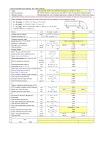
What is a valve?
A valve is a mechanical device used in fluid systems to control, direct, isolate, mix, or regulate the flow or pressure of a fluid, by modifying the passageway through the pipe. When a valve is in the open position, the passageway is unobstructed and the fluid flows in a direction from higher pressure to lower pressure. By partially or fully obstructing the passageway through the valve, the flow can be reduced or completely stopped.
Technically, valves are pipe fittings but due to their critical function, wide variety of types, and operation options they are generally considered separately from other fittings. Valves are often the costliest components of the piping system in a plant; the cost of valves can be as much as 30% of the overall piping cost.
What are the functions of a valve in piping systems?
Valves play a critical role in increasing efficiency, improving quality control, and ensuring safety and reliability of a process. The primary consideration in valve selection is the desired function of the valve. Valves are incorporated into a piping system for one or more of the following reasons:
- Starting or stopping fluid flow
- Throttling flow rates within a piping system
- Regulation of pressure
- Regulation of fluid temperature in a piping system
- Redirecting the flow from one path to another
- Restricting the flow for system balance or to prevent over pressurization
- Prevent reverse flow of fluid
- Stopping the flow in case of a system failure
- Improving safety through relieving pressure or vacuum in a piping system.
At the design stage of a manufacturing process or a piping system, engineers generally specify the type of valve suitable for the desired function on the Process and Instrumentation Diagram (P&ID). A P&ID is a schematic illustration of the functional relationship of piping, instrumentation and system components. Different types of valves commonly found on P&IDs are introduced and discusses in the following section.












0 Comments